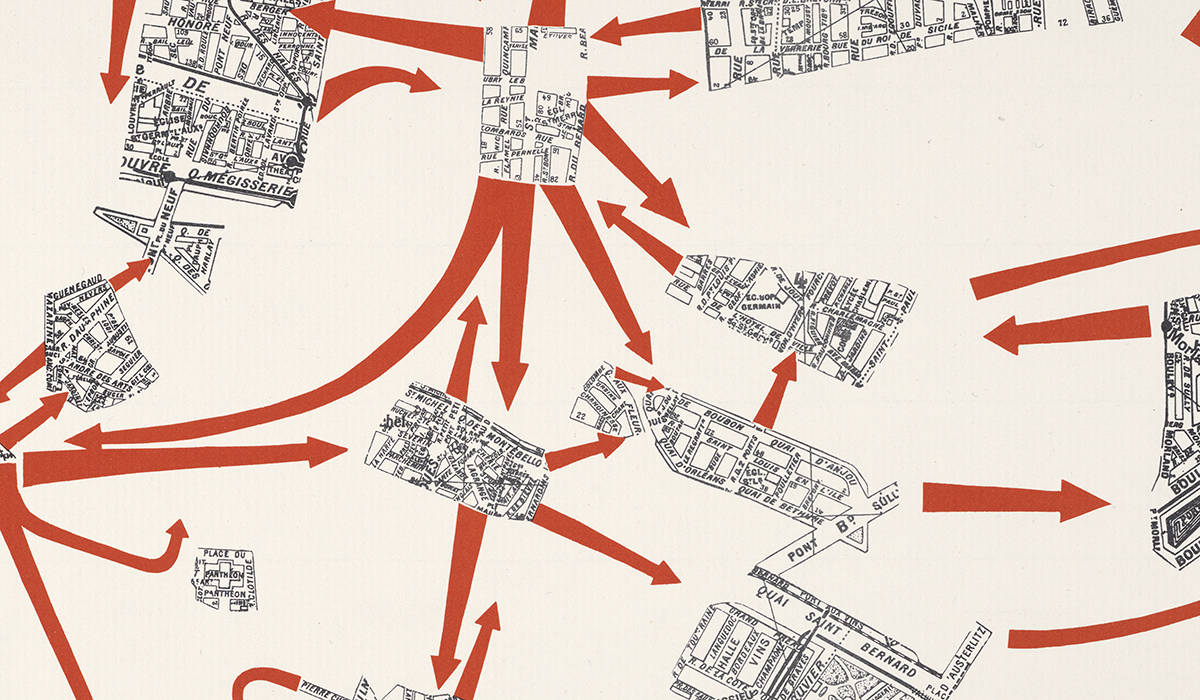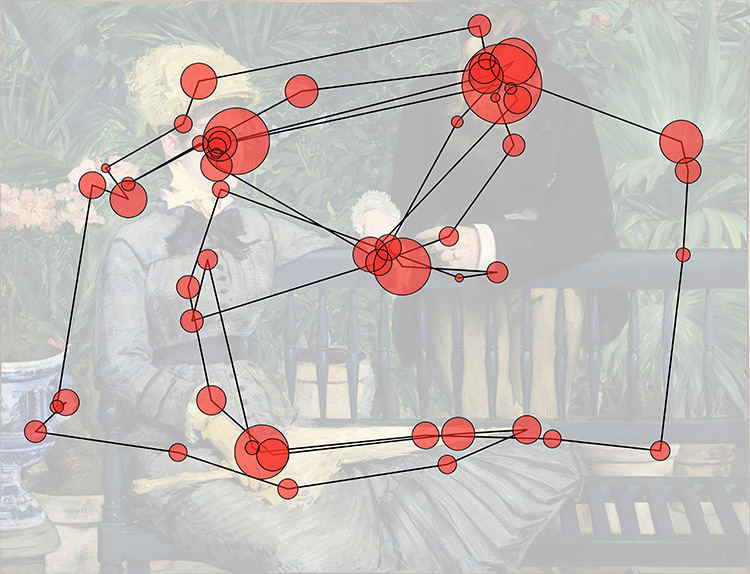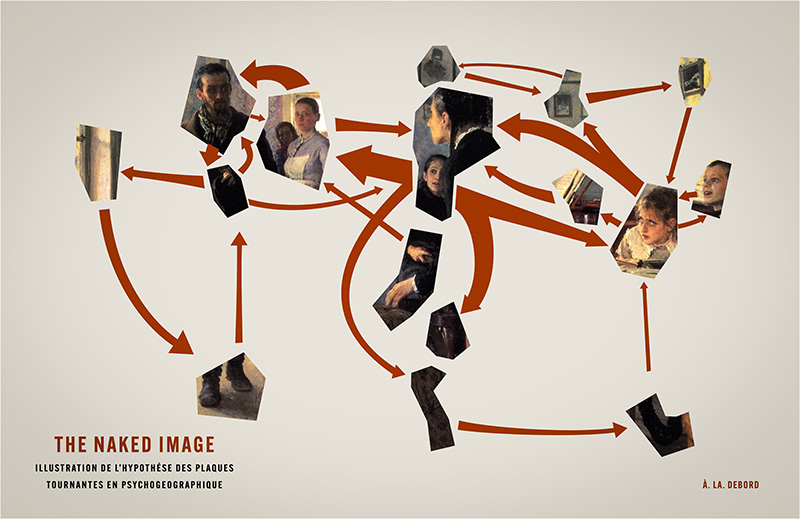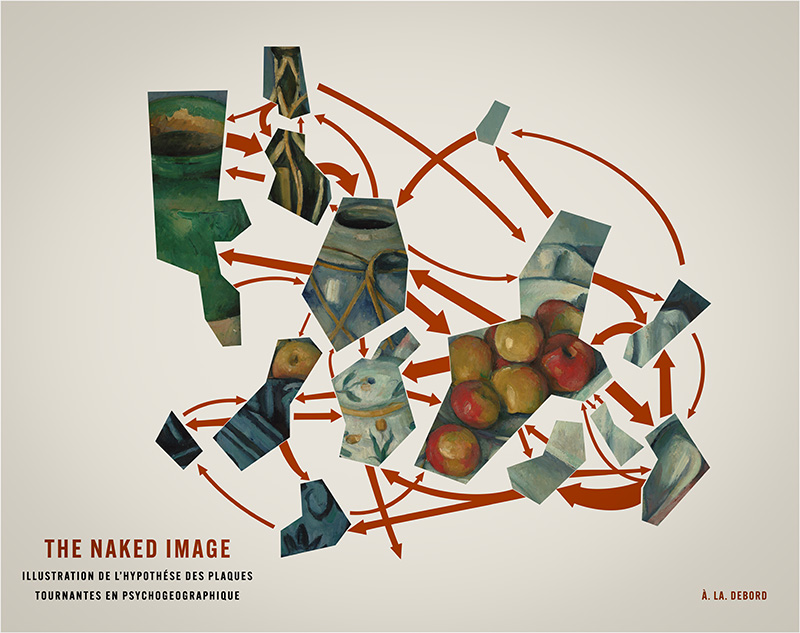
2025
The spectacle [...] naturally finds vision to be the privileged human sense which the sense of touch was for other epochs; the most abstract, the most mystifiable sense corresponds to the generalized abstraction of present-day society.
Guy Debord
Society of Spectacle (1967)
This paper identifies theoretical and graphical parallels between two unlikely accomplices: the mid-20th century multidisciplinary movement Situationist International, and developments in the psychological study of eye movements. Both the Situationist movement and eye movement analysis approach the ostensible objectivity of the visible world through a deconstructed and personalized interpretation made possible by our perception. This essay provides diagrams of eye-tracking studies inspired by early Situationist graphics, highlighting the piecemeal and constructive nature of our perception.
sight X site
← back to research projects
Contents to be published as "Sight-x-Site," in Leonardo, 2025

Comparison of conventional scanpath visualization (left) and Debord‐inspired map (right), using same eye‐tracking data. Stimulus: Édouard Manet, In the Conservatory (1878‐1879).


Converted map from viewing of Ilya Repin, Unexpected Visitors (1884-1888).
The discursive affinities between the Situationist project and conventional eye‐tracking analysis illustrate the potential for the subversive creativity inherent in our perception, and the pliability of seemingly concrete and static spaces where interpretation is not only possible, but inevitable.

Converted map from viewing of Paul Cezanne, Still Life with Apples (1894).